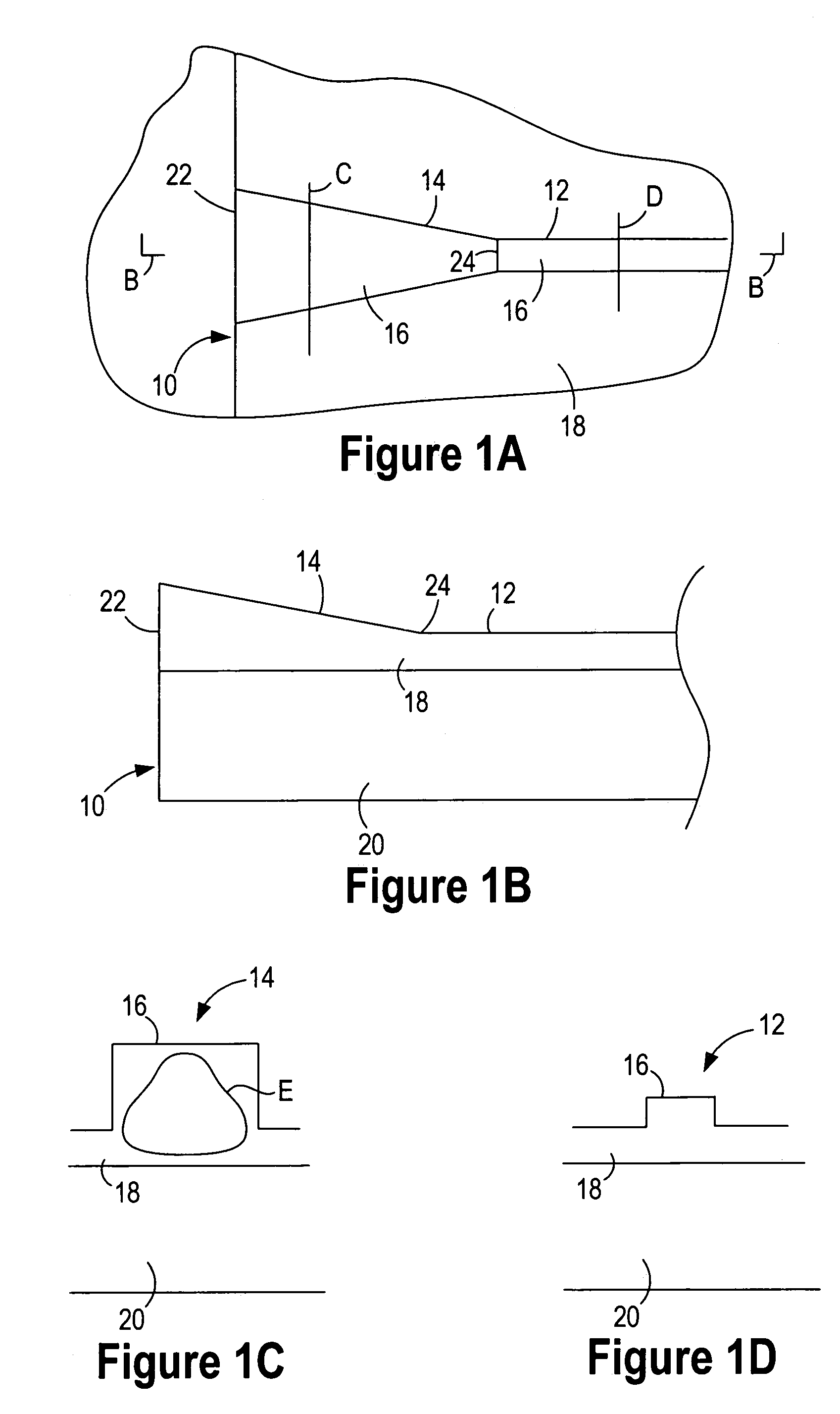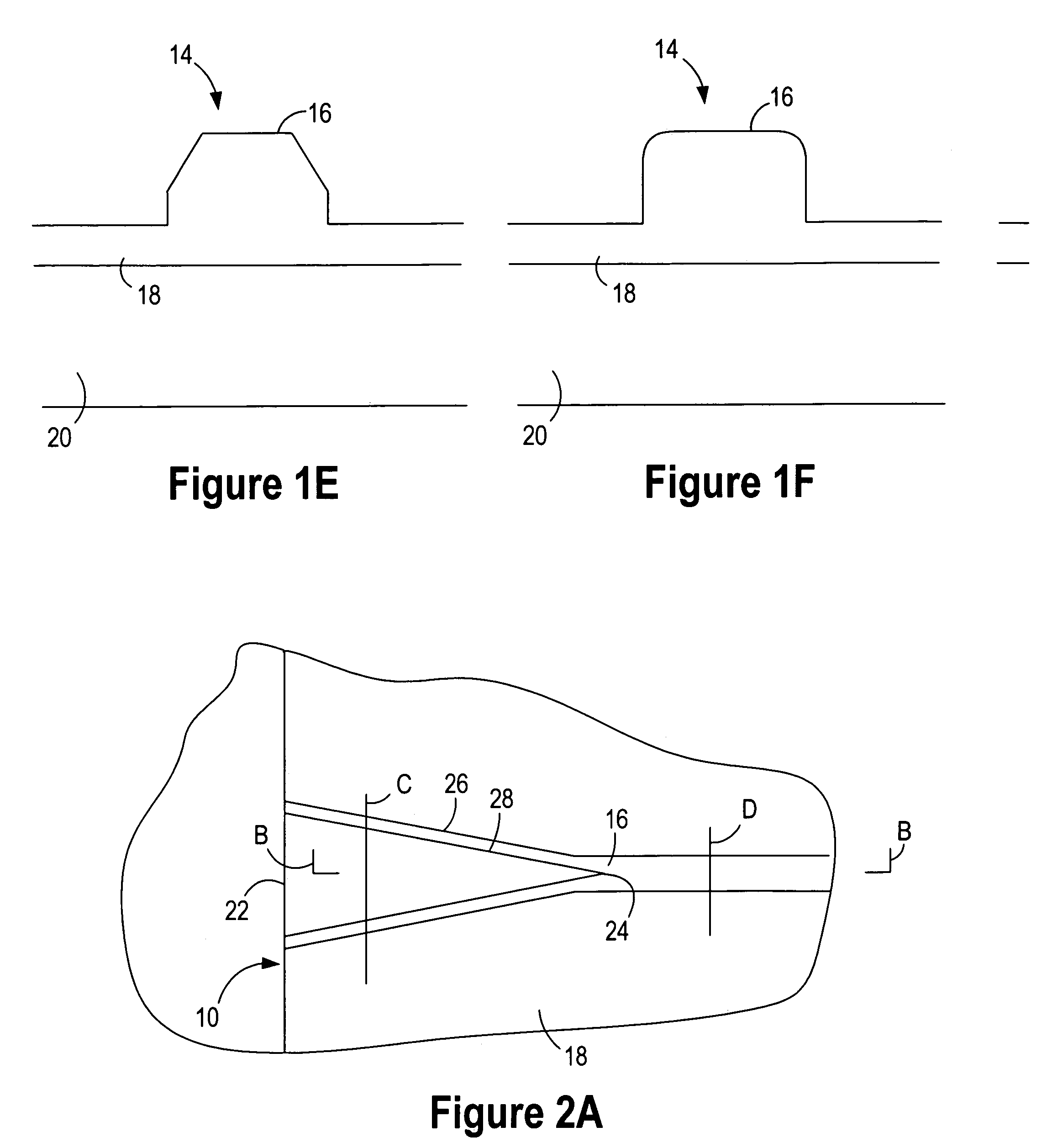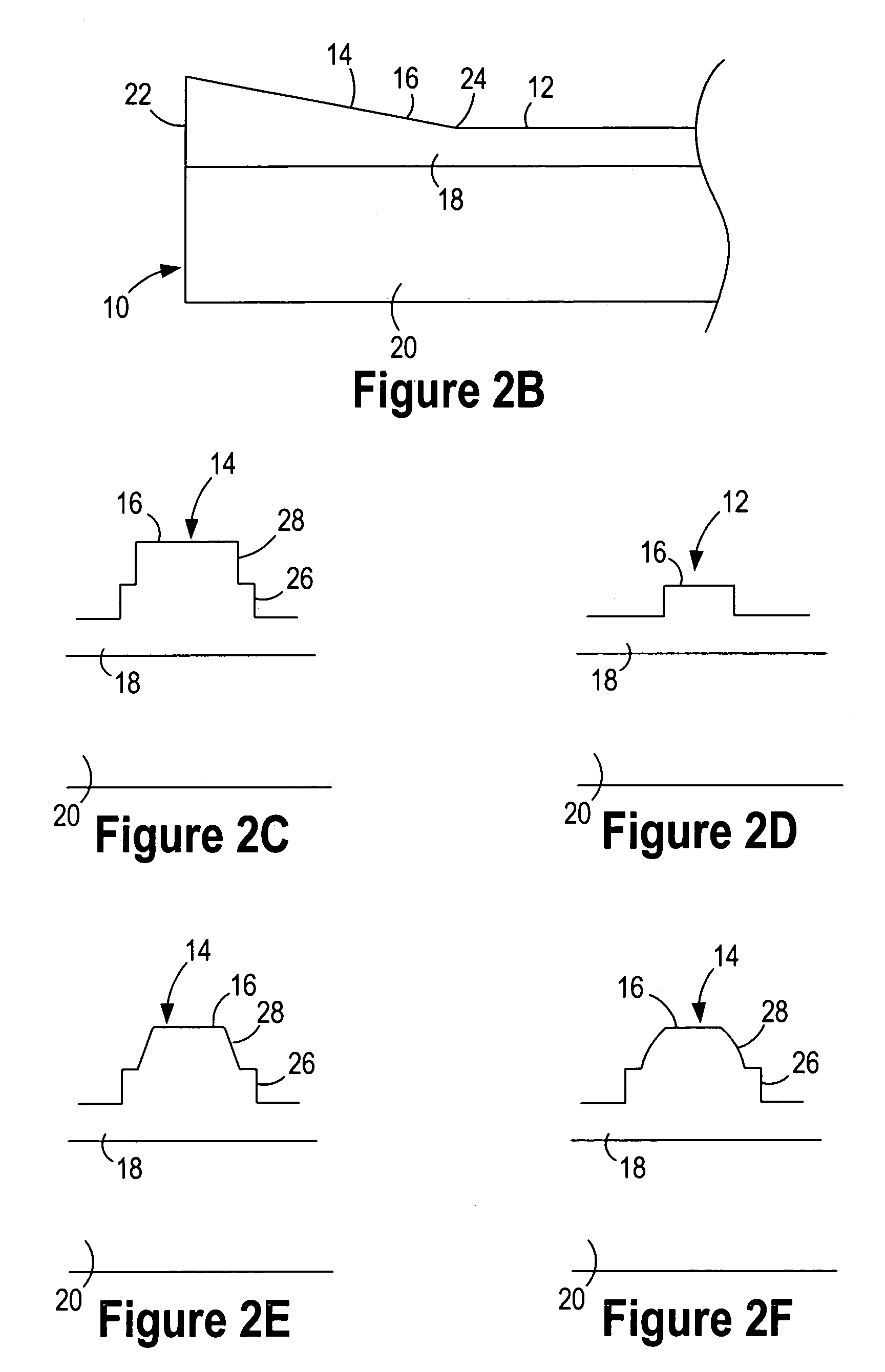Controlled selectivity etch for use with optical component fabrication
a technology of selective etching and optical components, which is applied in the direction of photomechanical equipment, instruments, photosensitive material processing, etc., can solve the problems of inconvenient forming of etches and limited etching to vertical surfaces of optical components
- Summary
- Abstract
- Description
- Claims
- Application Information
AI Technical Summary
Benefits of technology
Problems solved by technology
Method used
Image
Examples
example 1
[0097]The following example is performed on a Decoupled Plasma Source Deep Trench etcher (DPSDT) manufactured by Applied Materials. An optical component precursor is positioned in the chamber. The optical component includes silicon as the light transmitting medium. One or more portions of the optical component are masked with a photoresist having a region with a vertical taper. The optical component precursor is etched by delivering an etching medium having SF6 as the first etchant and CF4 as the second etchant. The SF6 flow rate is about 6 sccm and the CF4 flow rate is about 60 seem so as to maintain the chamber pressure at about 4 mTorr. The source power is operated at 700 W and 13.56 MHz. The cathode is operated at 120 W and 400 KHz and at a temperature of about 10° C. The etch is performed for a period of time needed to etch through at least the portion of the mask having the taper. Accordingly, at least a portion of the vertical taper is transferred to the optical component pre...
example 2
[0098]The following example is performed on a Decoupled Plasma Source Deep Trench etcher (DPSDT) manufactured by Applied Materials. An optical component precursor is positioned in the chamber. The optical component includes single crystal Si in some area and poly Si in other areas as the light transmitting medium. The surface of poly Si is rough and the interface of single crystal Si and poly Si have a roughness on the order of 1 um. A photoresist is spin coated on the surface having the smoothness of about 10 nm. The optical component precursor is etched by delivering an etching medium having SF6 as the first etchant and CF4 as the second etchant. The SF6 flow rate is about 6 sccm and the CF4 flow rate is about 60 sccm so as to maintain the chamber pressure at about 4 mTorr. The Source RF power is operated at 700 W and 13.56 MHz. The cathode is operated at 120 W and 400 KHz and at a temperature of about 110° C. The etch is performed for a period of time needed to etch through the r...
example 3
[0099]The following example is performed on a Decoupled Plasma Source Deep Trench etcher (DPSDT) manufactured by Applied Materials. An optical component precursor is positioned in the chamber. An alternative gas combination and ratio can be used to etch waveguide with the selectivity of Si to resist as desired ratio. The optical component includes silicon as the light transmitting medium. The optical component precursor is etched by delivering an etching medium having SF6 as the first etchant and CF4 as the second etchant. The SF6 flow rate is about 20 sccm and the CHF3 flow rate is about 60 sccm so as to maintain the chamber pressure at about 4 mTorr. The Source RF power is operated at 1000 W and 13.56 MHz. The cathode is operated at 30 W and 400 KHz and at a temperature of about 101C. The etch is performed for a period of time needed to etch to get the desired WG depth. The selectivity of Si to resist is 2:1.
[0100]The methods of FIG. 4A through FIG. 6O each employ one or more etch...
PUM
| Property | Measurement | Unit |
|---|---|---|
| RF DC bias power | aaaaa | aaaaa |
| pressure | aaaaa | aaaaa |
| pressure | aaaaa | aaaaa |
Abstract
Description
Claims
Application Information
 Login to View More
Login to View More - R&D
- Intellectual Property
- Life Sciences
- Materials
- Tech Scout
- Unparalleled Data Quality
- Higher Quality Content
- 60% Fewer Hallucinations
Browse by: Latest US Patents, China's latest patents, Technical Efficacy Thesaurus, Application Domain, Technology Topic, Popular Technical Reports.
© 2025 PatSnap. All rights reserved.Legal|Privacy policy|Modern Slavery Act Transparency Statement|Sitemap|About US| Contact US: help@patsnap.com



